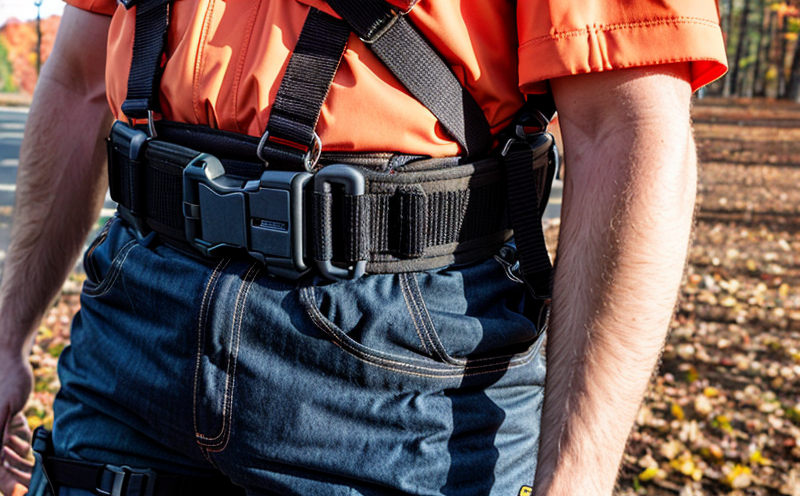Fall arrest harness inspection
The inspection of fall arrest harnesses is a critical component in ensuring workplace safety. Fall arrest systems are designed to protect workers from injuries that could occur due to falls from heights, especially in construction, industrial, and other high-risk environments. The harness plays a pivotal role in this system by catching the worker if they slip or lose balance. Regular inspections ensure that these harnesses remain effective and reliable.
Inspections are typically conducted according to international standards such as ISO 14925, EN 361, and ANSI Z359 series. These standards specify detailed requirements for the design, testing, maintenance, and use of fall arrest equipment. The inspection process involves several key aspects:
- Visual Inspection: This is the first step in any harness inspection. It checks for visible signs of damage such as cuts, tears, burns, or other physical deformities.
- Load Testing: Harnesses are subjected to a static load test to ensure they can withstand the forces exerted during a fall arrest without failing.
- Fit and Comfort Evaluation: Ensuring that the harness fits properly is crucial for comfort and safety. A poorly fitting harness could lead to improper positioning, compromising its effectiveness.
The inspection process also involves detailed documentation of findings. Any faults or deficiencies identified must be recorded accurately and addressed promptly. This ensures compliance with regulatory requirements and helps maintain a safe working environment.
| Inspection Criteria | Description |
|---|---|
| Visual Inspection | Check for visible signs of damage such as cuts, tears, burns, or other physical deformities. |
| Load Testing | Subject the harness to a static load test to ensure it can withstand forces without failing. |
| Fit and Comfort Evaluation | Evaluate whether the harness fits properly for optimal safety and comfort. |
Failure to conduct regular inspections can lead to serious injuries or fatalities. Hence, it is essential that these inspections are performed by qualified personnel using appropriate equipment and methodologies.
Benefits
- Enhanced Safety: Regular inspections significantly reduce the risk of accidents involving fall arrest harnesses.
- Compliance: Ensures adherence to international standards and regulatory requirements.
- Cost Efficiency: Prevents costly repairs or replacements by identifying issues early on.
- Promotes Safety Culture: Encourages a proactive approach towards safety, leading to improved overall workplace safety.
By implementing a robust inspection regime for fall arrest harnesses, organizations can create a safer environment for their workers and reduce the likelihood of incidents. This not only protects employees but also helps in maintaining good reputation and compliance with legal requirements.
Industry Applications
| Industry Sector | Application |
|---|---|
| Construction | Inspecting harnesses used by workers on scaffolding, roofs, and other elevated structures. |
| Manufacturing | Evaluating fall arrest systems in factories for maintenance work at heights. |
| Oil and Gas | Checking harnesses worn by personnel during inspections of offshore platforms and pipelines. |
| Utility Services | Ensuring safety equipment used by utility workers during tree trimming, pole climbing, etc. |
The versatility of fall arrest harnesses across various industries underscores the importance of regular inspections. By adhering to these practices, organizations can enhance their safety measures and comply with industry-specific standards.
Use Cases and Application Examples
- Construction Sites: Workers using fall arrest systems on scaffolding or during high-altitude work are subject to rigorous inspections before commencing their tasks.
- Manufacturing Plants: Maintenance personnel who perform tasks at heights, such as cleaning chimneys or repairing equipment, need to have their harnesses inspected regularly.
- Offshore Platforms: Oil and gas workers frequently inspect fall arrest systems during routine maintenance activities on offshore platforms.
- Utility Companies: Tree trimmers and pole climbers often use fall arrest harnesses. Their equipment needs to be checked before each job to ensure safety.
| Use Case | Description |
|---|---|
| Construction Sites | Inspecting harnesses used by workers on scaffolding or during high-altitude work. |
| Manufacturing Plants | Evaluating fall arrest systems for maintenance tasks at heights in factories. |
| Offshore Platforms | Checking harnesses worn by personnel during routine inspections of platforms and pipelines. |
| Utility Companies | Ensuring safety equipment used by workers during tree trimming or pole climbing activities. |
In each case, the inspection process is tailored to meet specific industry requirements. For instance, in offshore environments, additional factors like exposure to saltwater may require more stringent inspection protocols.





